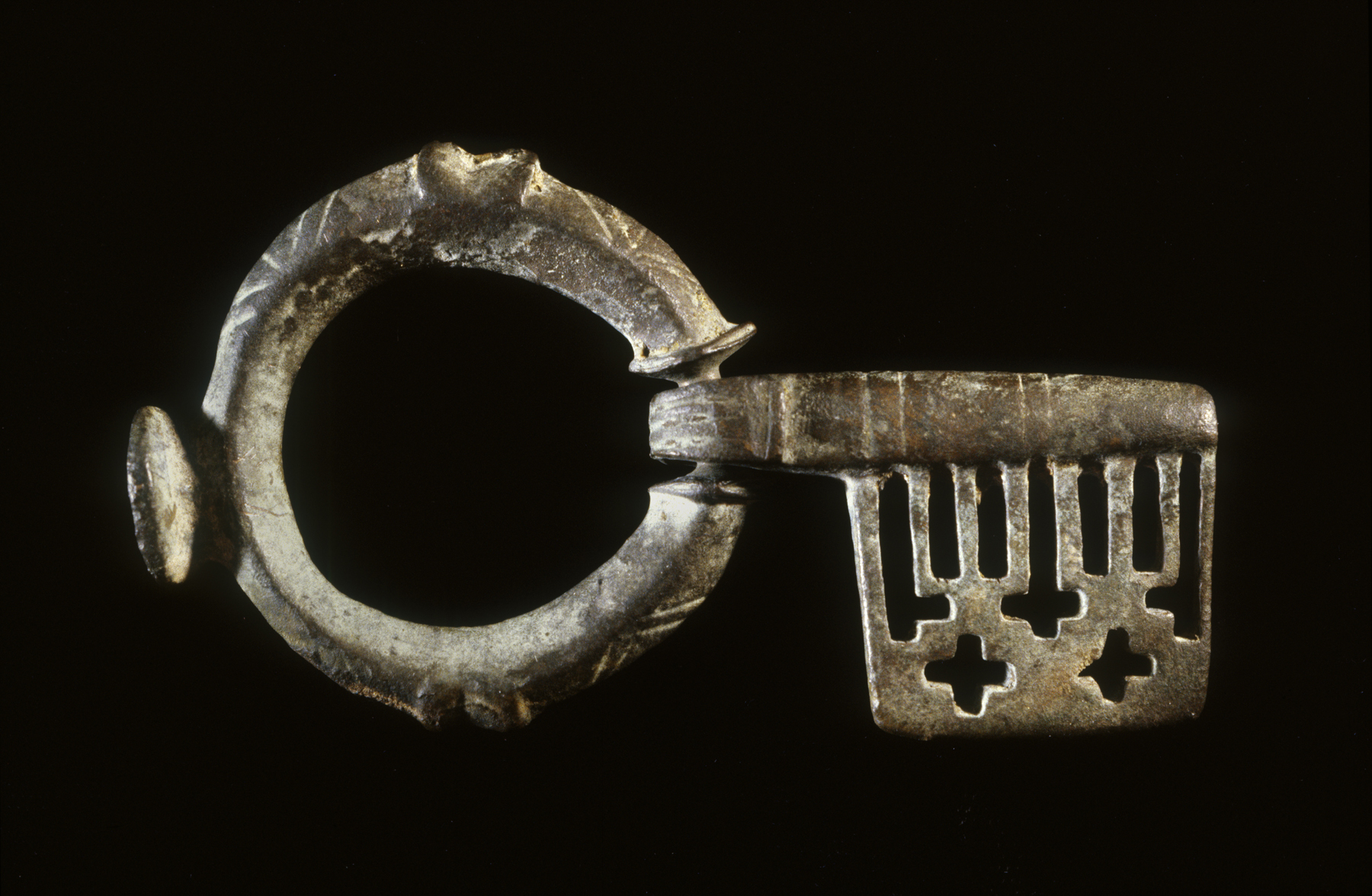Key
(Roman Empire )
This type of key, commonly used during the Byzantine period, could be easily carried, an important feature at a time when clothes had no pockets. The hoop of the key fits like a finger ring, and the short barrel can be folded into the palm of the hand. Unlike the teeth on modern keys, the slotted holes on this example are purely decorative, while the small crosses were intended to protect the owner's possessions.
Provenance
Provenance (from the French provenir, 'to come from/forth') is the chronology of the ownership, custody, or location of a historical object. Learn more about provenance at the Walters.
William T. / Henry Walters Collection, Baltimore [date and mode of acquisition unknown]; Walters Art Museum, 1931, by bequest.
Exhibitions
| 1989 | Beyond the Pharaohs: Egypt and the Copts in the Second to Seventh Centuries A.D.. Museum of Art, Rhode Island School of Design, Providence; The Walters Art Gallery, Baltimore. |
Geographies
Egypt (Place of Origin)
Measurements
3 5/8 x 2 1/16 x 9/16 in. (9.3 x 5.3 x 1.4 cm)
Credit Line
Acquired by Henry Walters
Location in Museum
Accession Number
In libraries, galleries, museums, and archives, an accession number is a unique identifier assigned to each object in the collection.
In libraries, galleries, museums, and archives, an accession number is a unique identifier assigned to each object in the collection.
54.1023


